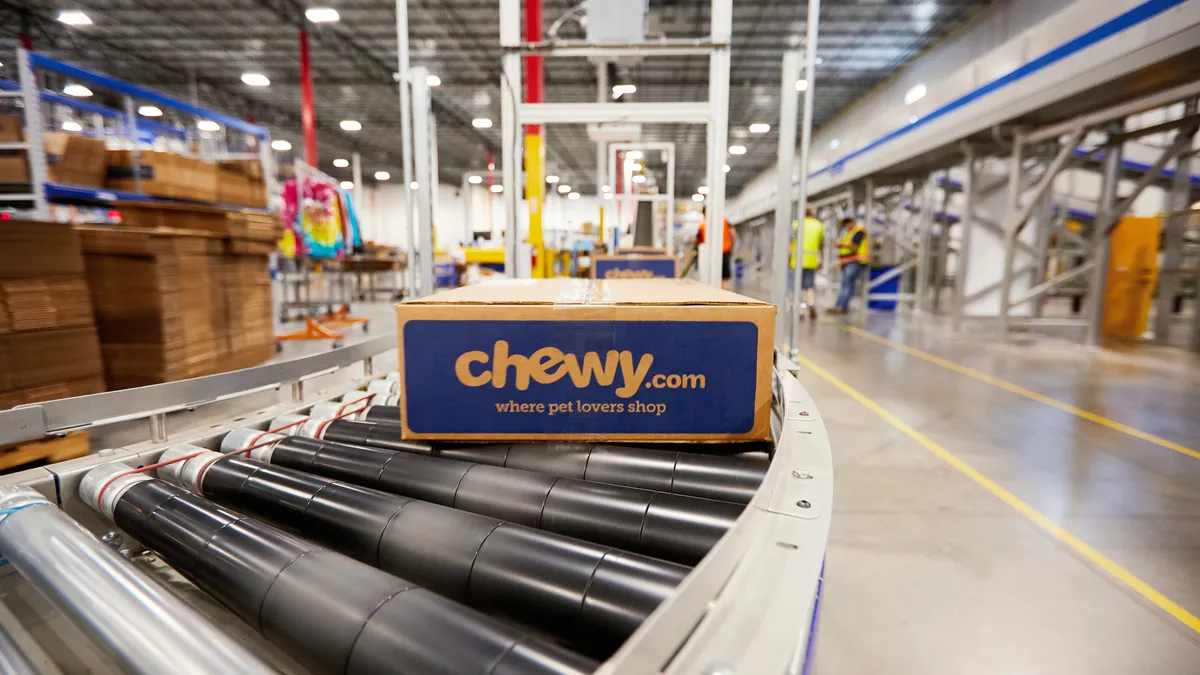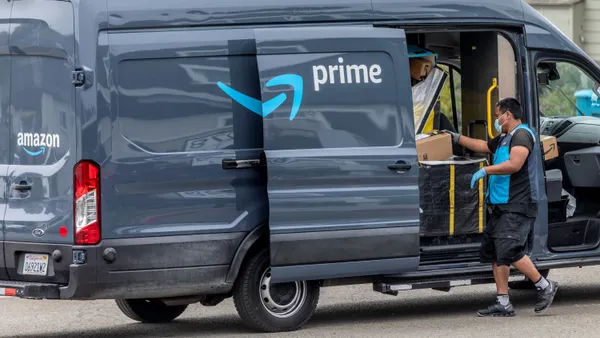Dive Brief:
- Online pet specialist Chewy's second-quarter sales rose 26.8% year over year to nearly $2.2 billion.
- Driving that expansion was a 21% increase in active customers and a 13% rise in net sales per customer, CEO Sumit Singh said in a press release.
- Gross margins expanded by 200 basis points to 27.5%. With net loss of $16.7 million, profits remained negative but narrowed by roughly half from the same period last year.
Dive Insight:
Chewy has been one of the enduring winners of the pandemic era, having been particularly well suited to ride out some of the major trends in both shopping habits and life during lockdown — namely, the rise in e-commerce shopping and the turn to pets as consumers turned inward to their own homes.
In Q2, Chewy posted strong growth on top of last year's blazing sales, which grew by nearly half during the same period. It bodes well for the business that much of Q2's growth this year is based both on customer acquisition and rising sales per customer.
"We have increased share of wallet from every cohort we've added to our platform over the past 10 years, and our long-term revenue retention levels from each cohort remain well above 100%," Singh told analysts on a conference call Wednesday, according to a Seeking Alpha transcript. "As a result, our base of recurring revenues grows over time as the revenue produced by each cohort stacks on top of one another, like the layers of a cake."
On the whole, customer additions this year are running behind the record levels during the peak of pandemic lockdowns last year but running 20% above 2019 levels, and the company is gaining market share over others online, according to Singh.
While the online retailer didn't hit profitability for the quarter, it expanded its margins, which Singh attributed to stable promotions, recurring purchases among shoppers and the company's scale. At the same time, Chewy faced an "unprecedented" increase in marketing costs, with advertising and marketing expenses rising by 80 basis points, said Singh.
The executive added later on the call that average costs for Google advertising have risen by 51% so far this year, and Facebook ad prices have risen 47%. Price increases in digital advertising in the pet category specifically were even steeper, Singh said, estimating that the cost-per-click has increased 80% in the category year to date.
The company's EBITDA fell short of analyst expectations, sending the company's stock down more than 11% after it reported, according to Seeking Alpha.
For all its growth, Chewy still has to prove it can consistently run its business profitably. The company's sales have roughly doubled since 2018, but it's still in the red. Last year it posted a net loss of $92.5 million — well under half what it did in 2019 but still a long way from making money from the business. A big part of that was the more than half a billion dollars in marketing expenses Chewy paid for the year to acquire and retain customers.
Digital marketing is one of the biggest hurdles for online retailers on their way to profitability. But unlike other companies desperately seeking scale in home goods, apparel or other discretionary categories, Chewy's customers need to make regular purchases of products to keep their pets fed and happy.














